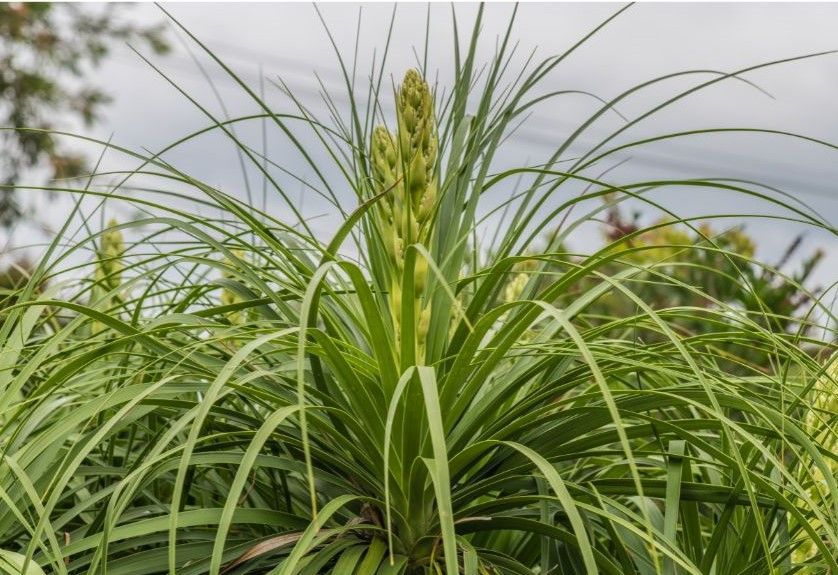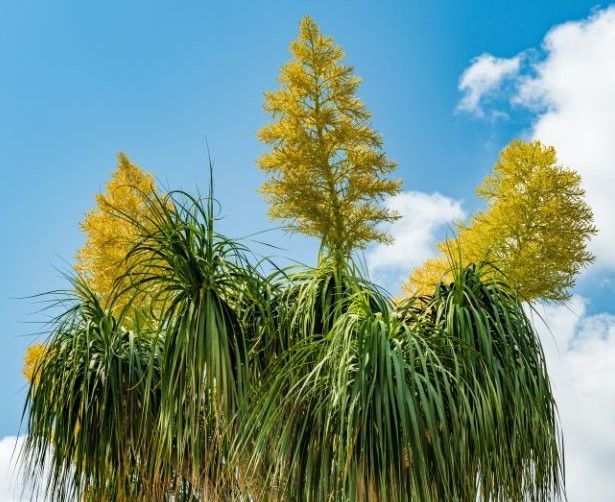The Ponytail Palm: The Best Houseplant For You?
If you’re searching for the perfect indoor plant, the ponytail palm (Beaucarnea recurvata) is a strong contender — but is it really the best houseplant? This quirky, sculptural plant is famous for its graceful, cascading leaves and its thick, water-storing trunk, giving it a unique blend of tropical elegance and desert resilience.
Ponytail palms have become a favorite among houseplant enthusiasts for good reason: they’re incredibly low-maintenance, adapt to a wide range of indoor conditions, and rarely fall victim to common houseplant pests. Whether you’re a seasoned plant parent or someone who forgets to water for weeks at a time, this hardy plant fits into almost any lifestyle.
In this article, we’ll explore what makes the ponytail palm special, why it’s such a great houseplant, and how it compares to other popular indoor plants. You’ll also discover some of the bonus perks that make this plant particularly appealing to indoor gardeners — from its petite size and modern aesthetic to its long lifespan and ability to thrive on neglect.
However, no plant is perfect. While the ponytail palm checks many boxes, there are a few considerations that might make it less than ideal for certain homes, such as its preference for bright light and its mild toxicity to pets.
So — is the ponytail palm truly the best houseplant? Let’s dive in and find out.
Ponytail Palms at a Glance:
- Tolerates bright indirect to direct sunlight (but survives in lower light)
- Needs infrequent watering — thrives on neglect
- Rarely needs repotting
- Not fussy about humidity
- Pest-resistant and generally hardy
- Great for modern, minimalist, or desert-themed décor
- Combines well with other succulents and cacti
- Long-lived — can last for decades with basic care
- While not highly toxic, ponytail palms can cause mild stomach upset if curious pets chew on the leaves. It’s best to keep them out of reach if you have particularly mischievous cats or dogs.
What makes a ponytail palm special?
Distinctive Features
One of the ponytail palm’s standout features is its swollen, bottle-like base, which stores water to help the plant survive drought. This gives the trunk a sculptural, bonsai-like appeal that adds interest to any indoor plant collection. Not only that, but atop the thick trunk, the plant produces a spray of long, thin, curling leaves that arch outward and drape down, resembling a fountain or — you guessed it — a ponytail. These ribbon-like leaves provide beautiful texture, offering contrast next to broader-leafed plants.
Ideal for Indoor Spaces
Ponytail palms grow very slowly, often taking years to gain just a few inches in height. This makes them ideal for compact areas like shelves, desks, or windowsills — and they’re a perfect choice for plant lovers who have limited space. Indoors, they typically reach about 3 to 4 feet tall, though they can grow much larger when planted outdoors in warm climates.
Low Maintenance & Drought Tolerance
This plant is a dream for forgetful waterers! Thanks to its water-storing trunk, the ponytail palm can go for weeks without watering. In fact, overwatering is one of the easiest ways to harm it, so it thrives on neglect — a perfect match for beginners or travelers who want greenery without constant upkeep.
Potential for Indoor Flowers
While flowers are rare on indoor ponytail palms, mature plants (usually over 10 years old) may occasionally bloom under the right conditions — plenty of bright light, warmth, and some environmental stress (like being root-bound or exposed to seasonal changes in temperature). The flowers emerge on tall stalks and are small, creamy-white, or pale yellow, typically appearing in summer. Flowering is much more common in outdoor specimens, especially in warm, arid climates.
A Long-Term Companion
With proper care — which mainly consists of bright light, occasional watering, and avoiding overwatering — the ponytail palm can live for decades, becoming a long-time, almost pet-like plant companion. Some well-cared-for specimens even pass from one generation to the next, making them a great heirloom plant for families who love gardening.


Why is the ponytail palm a good houseplant?
The ponytail palm is one of the most low-maintenance houseplants you can own, making it a fantastic choice for beginners, frequent travelers, or anyone who prefers a "hands-off" plant. This unique succulent thrives on neglect — it stores water in its bulbous, bottle-shaped base, meaning it only needs to be watered every few weeks, depending on the season. Its slow growth rate means it rarely needs repotting, making long-term care especially easy.
Ponytail palms thrive in bright, indirect light, though they can adapt to lower light conditions — they may grow more slowly, but they’ll survive just fine in spaces that don’t get tons of natural light. They’re also not fussy about humidity, making them well-suited for typical indoor environments, including homes with dry air from heating or air conditioning.
While they’re tough and resilient, ponytail palms also offer aesthetic appeal, combining a sculptural, desert-inspired look with graceful, cascading leaves that soften their appearance. They fit beautifully into modern, minimalist, or boho décor, and their unique silhouette makes them an instant conversation piece.
As a bonus, ponytail palms are not prone to pests like spider mites or mealybugs, which can plague many houseplants. They also help improve indoor air quality by releasing oxygen and potentially filtering some toxins — though this effect is minor compared to larger plants.
For plant lovers building a diverse collection, the ponytail palm pairs beautifully with cacti, succulents, and other drought-tolerant plants, creating a visually appealing, easy-care indoor garden. It’s also a long-lived plant that can become a true plant companion for decades.
How to care for a ponytail palm?
Caring for a ponytail palm is simple, making it a top choice for beginners and busy plant lovers. Here’s everything you need to know to keep your ponytail palm happy and healthy:
Light
Ponytail palms love bright, indirect light, but they’re surprisingly adaptable. They can tolerate lower light conditions, although they’ll grow more slowly. Avoid harsh, prolonged direct sunlight, especially through glass, as it can scorch the leaves. A sunny windowsill with filtered light is ideal.
Watering
With ponytail palms, less is more! Ponytail palms are drought-tolerant, so allow the soil to dry out completely between waterings. Water deeply, but infrequently — overwatering is one of the fastest ways to kill this plant. In winter, cut back watering even further, as the plant’s growth slows down.
Soil
Choose a well-draining potting mix, ideally one formulated for succulents or cacti. These mixes prevent excess moisture from sitting around the roots, reducing the risk of rot. If you’re making your own mix, combine regular potting soil with sand, perlite, or pumice for extra drainage.
Temperature & Humidity
Ponytail palms thrive in typical indoor temperatures, ideally between 60-80°F (15-27°C). They can handle low humidity without complaint, making them perfect for homes with dry air. Just be sure to keep them away from cold drafts, air conditioning vents, and frost, as they dislike sudden temperature drops.
Fertilizer
During the growing season (spring and summer), feed your ponytail palm with a balanced liquid fertilizer about once a month. Skip feeding in fall and winter, when the plant naturally slows its growth.
Repotting
Ponytail palms actually like being a bit root-bound, so they only need to be repotted every 2-3 years — or even less often if they seem content. When you do repot, choose a pot only slightly larger than the current one to avoid excess moisture in the soil.
So, is the ponytail palm the best houseplant for you?
The ponytail palm is certainly a standout when it comes to low-maintenance, visually striking houseplants. If you’re looking for a hardy plant that requires minimal attention and can thrive in a range of indoor environments, the ponytail palm might just be the perfect choice for you. Its unique appearance, tolerance for neglect, and ability to adapt to both low light and dry air make it a great fit for busy lifestyles and homes of all sizes.
However, like any plant, it’s not for everyone. If you don’t have access to bright, indirect light or if your home is constantly under cold drafts, the ponytail palm might struggle. Additionally, while it’s a relatively pest-free plant, it does require occasional repotting and the right conditions to thrive — not to mention, it’s mildly toxic to pets if they decide to chew on it.
Ultimately, whether or not the ponytail palm is the best houseplant for you comes down to your space, your care preferences, and your lifestyle. If you’re ready to embrace its slow growth and minimalist charm, this plant could be your next long-term companion!

Check out the latest:









